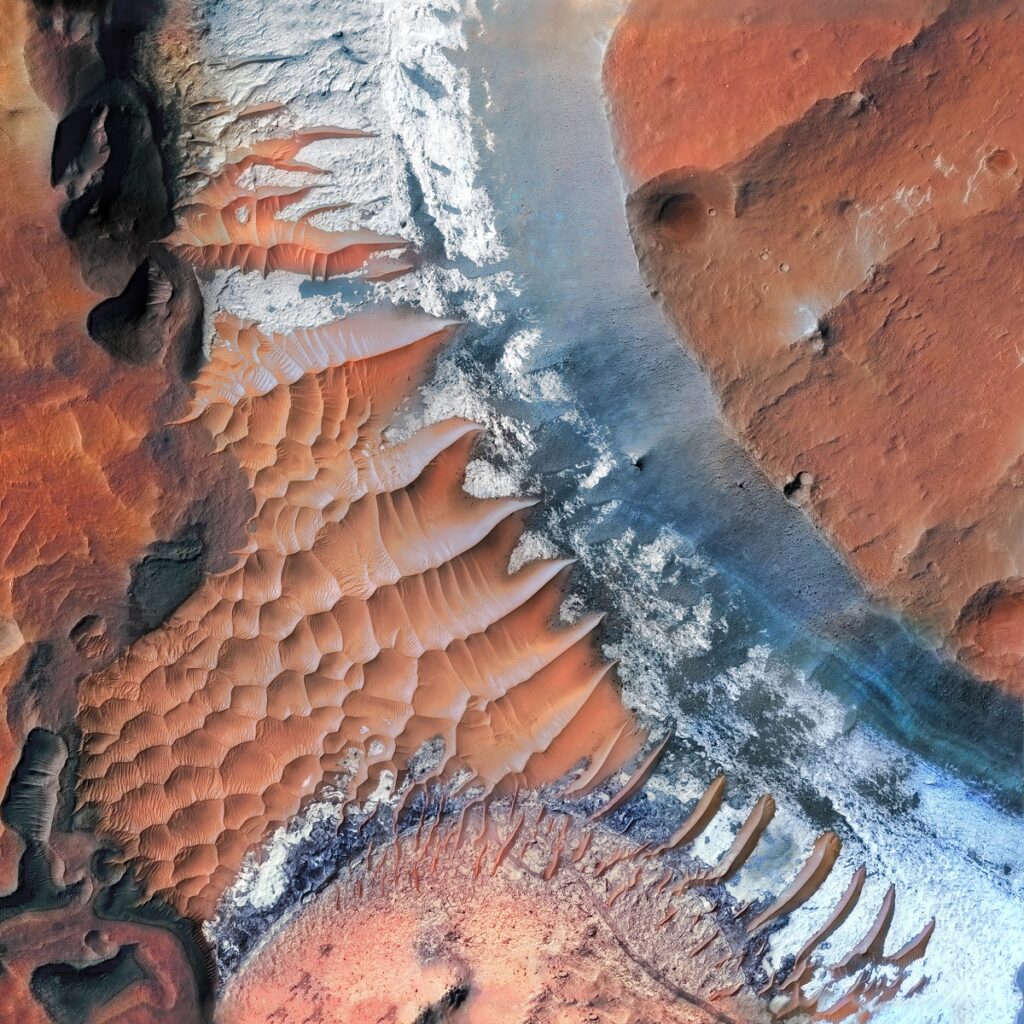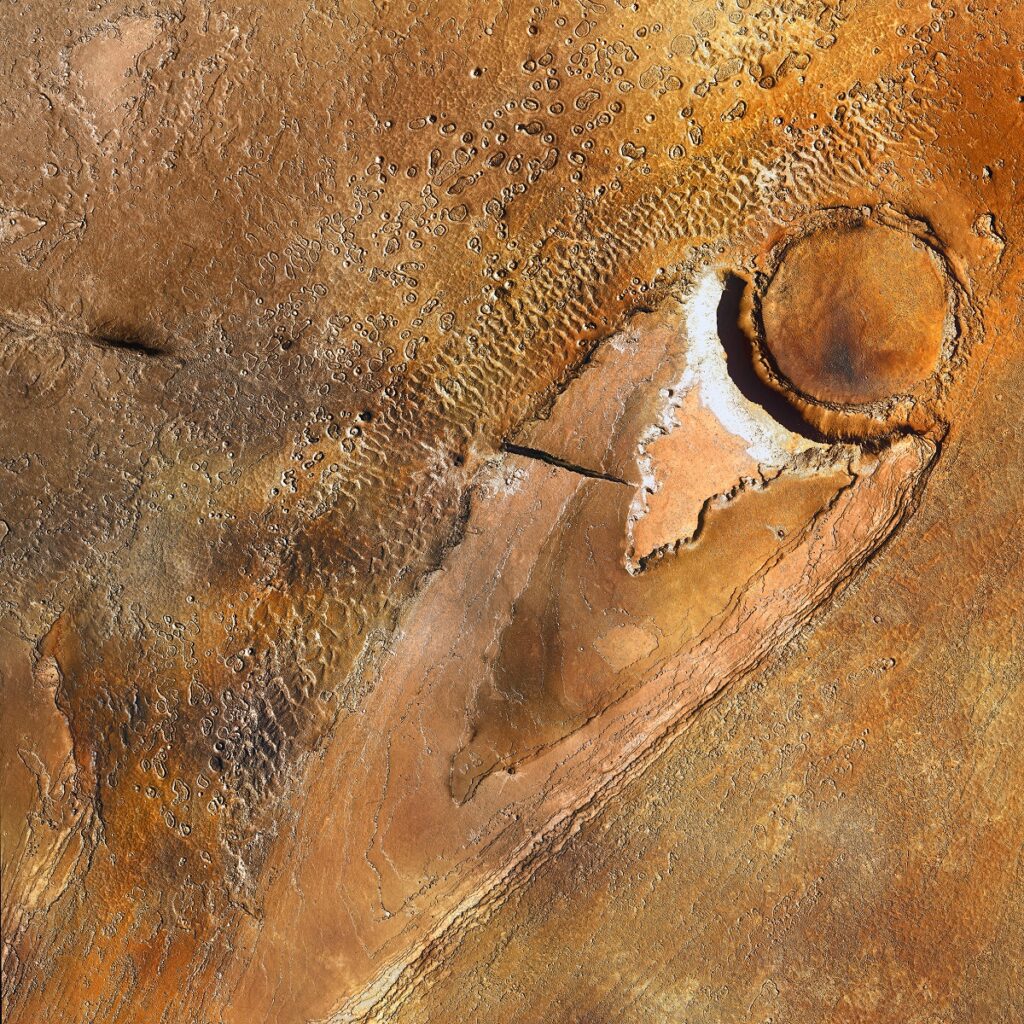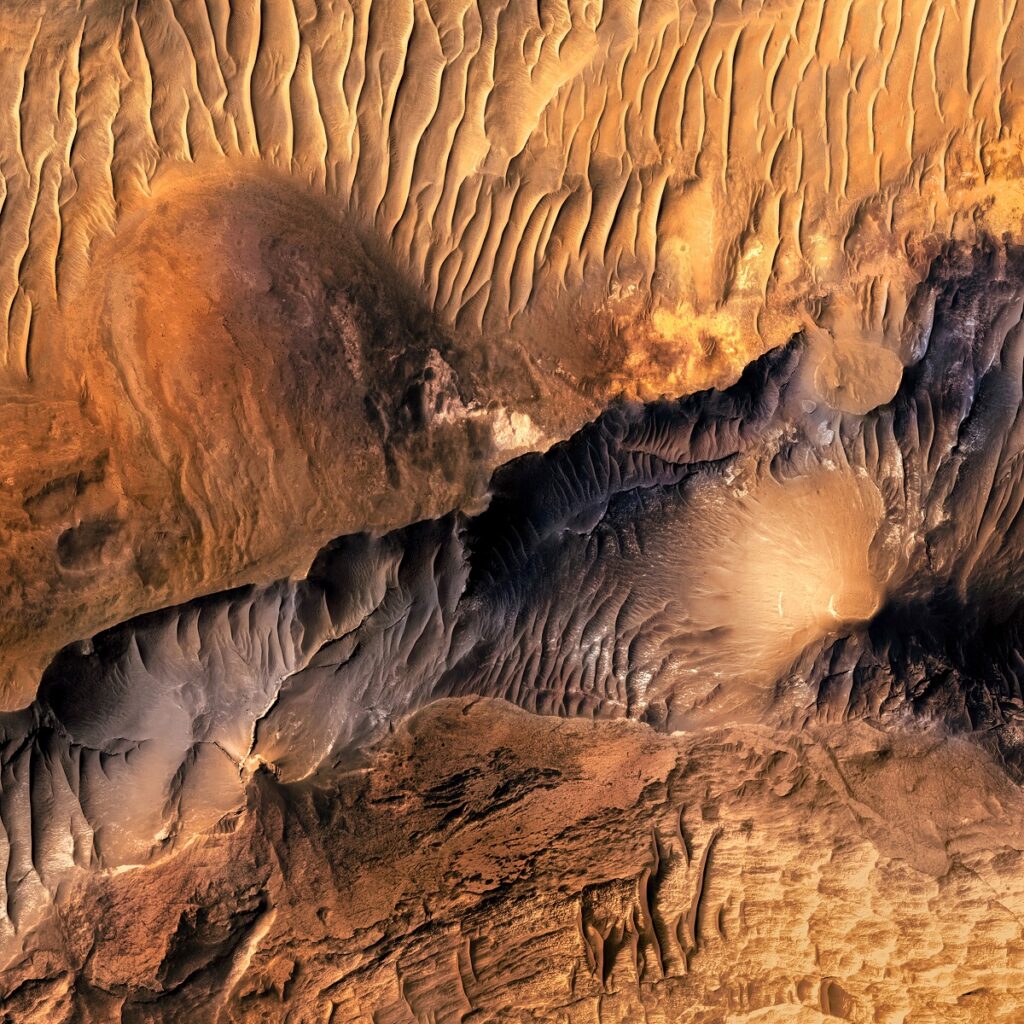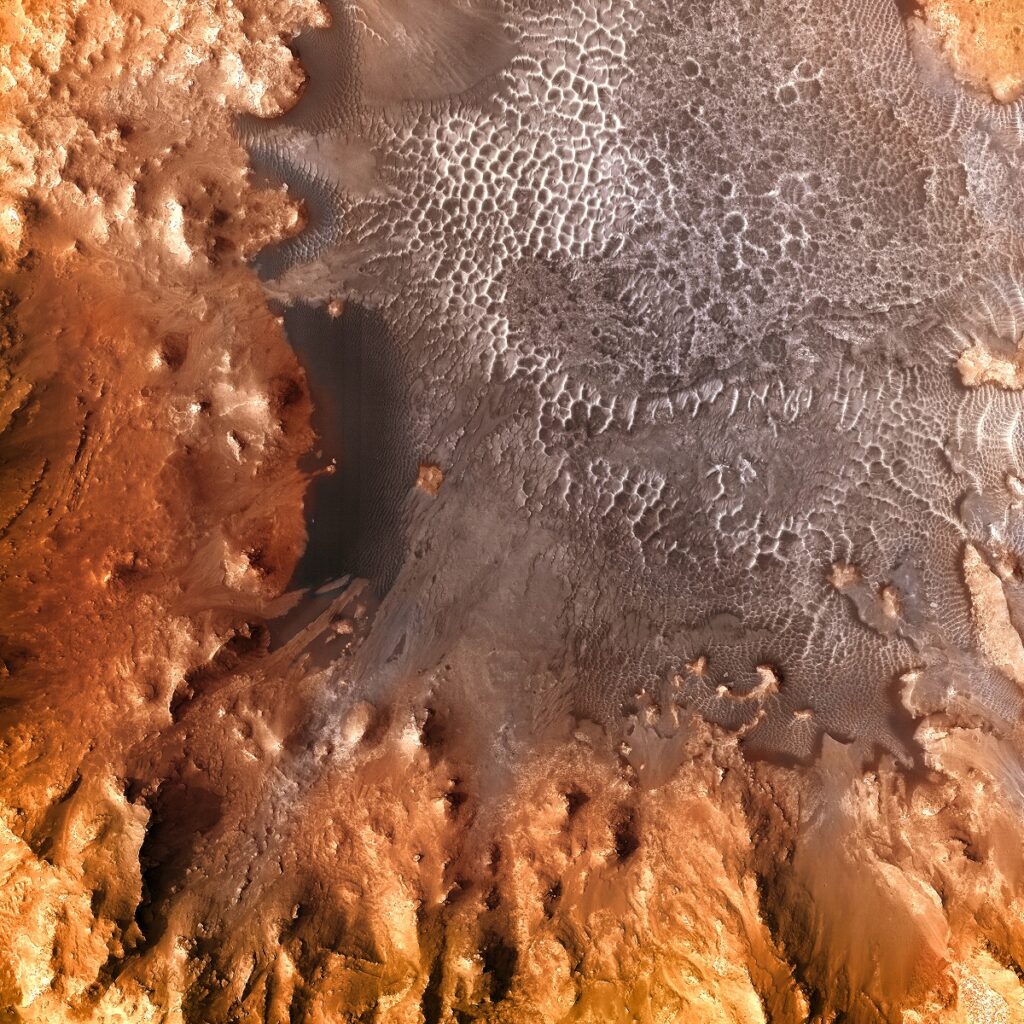Top 10 Largest Lakes on Mars
Top 10 Largest Lakes on Mars
WhiteClouds Builds 3D Marscapes and Canvas Prints
Did you know we make
custom
8K Mars Canvas Prints

and
3D Marscapes
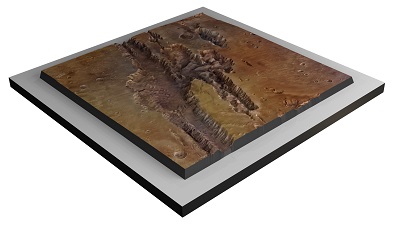
Though Mars is commonly imagined as a desolate, red expanse devoid of life, new scientific discoveries and exploratory missions have begun to reshape that perception, revealing a landscape that is far more complex and intriguing than previously thought. What was once considered a dry and uninhabitable planet is now emerging as a celestial body with a rich geological history, marked by the remnants of what were once massive lakes and waterways. These ancient Martian lakes are not just curiosities; they are awe-inspiring marvels that can compete with some of the most magnificent ancient bodies of water in our solar system. In this guide, we dive into the top 10 largest lakes on Mars that once graced the Martian surface.
#1: Eridania Lake (210,000 Square Miles)
Eridania Lake, in the souther highlands, is not just another Martian landmark; it’s a colossal body of water that defies the imagination. It is larger than even Earth’s Caspian Sea, a grandeur that Martian hydrology could achieve in a bygone era. Complementing its awe-inspiring scale is its name, Eridania, which harkens back to Eridanus, an ancient river from Greek mythology. This blend of science and myth elevates Eridania’s allure to almost legendary status. The lake was so unfathomably deep at one point that scientists speculate it could have completely submerged the entire state of California! Eridania’s mystique has not only captured the scientific imagination but has also become a beloved setting in science fiction works, where it is often imagined as Mars’ “lost sea” and a place where unexpected wonders may one day be discovered.
#2: Shalbatana Vallis (100,000 Square Miles)
Not your average Martian lake, Shalbatana Vallis (located in the Equatorial region) disrupts the traditional notion of what a lake should look like. Instead of a round body of water, it manifests as an elongated, river-like basin that snakes its way across the Martian equator. This atypical structure has led scientists to theorize that its formation could have been the result of monumental floods that ravaged the Martian surface eons ago. Serving as a possible ancient water channel, its peculiar shape could have acted as a pathway for redistributing vast volumes of water across disparate Martian terrains. This has led to its prominent consideration in ongoing scientific debates, and it stands as a serious candidate for a future landing site aimed at unlocking Mars’ watery past.
#3: Lake Holden (80,000 Square Miles)
Located tantalizingly close to its famed neighbor, Gale Crater, Lake Holden often gets eclipsed when it comes to the spotlight. However, don’t let that sway you into thinking it is any less crucial in the unfolding saga of Mars’ geological and possibly biological history. Featuring a rich array of sedimentary rock layers, each one is like a chapter in a book, contributing to an extraordinarily detailed timeline of Martian history. Each layer potentially contains the imprint of thousands, if not millions, of years, waiting to be deciphered by curious scientists. There’s even intriguing speculation surrounding its origin story; some hypothesize that the formation of Lake Holden and Gale Crater were not isolated events. Instead, they were part of a massive, planet-shaking impact event that forever altered the landscape and potentially the environmental conditions of this Martian region.
#4: Jesero Crater Lake (18,000 Square Miles)
Jezero Crater Lake, in the Isidis Planitia Basin, is not just another Martian lake; it holds the prestigious title of being the most famous lake on the Red Planet. Its fame skyrocketed when it was chosen as the landing site for NASA’s Perseverance Rover in 2021. But why was it picked? The answer lies in its geological allure: rich deposits of clay minerals that offer tantalizing hints of an environment that could have supported life at some point in Martian history. This unique feature positions Jezero as the veritable poster child for astrobiology research on Mars, making it a site of intense scientific scrutiny and public fascination alike. It stands as an everlasting symbol of humanity’s quest to seek out life beyond Earth and explore uncharted worlds.
#5: Eberswalde Lake (15,000 Square Miles)
Eberswalde Lake, in the Margaritifer Sinus quadrangle, holds a unique distinction among Martian lakes; it’s home to one of the most spectacularly well-preserved river deltas on the entire planet. This exceptional geological feature thrusts Eberswalde into the limelight as a prime candidate for future exploration missions explicitly targeting evidence of ancient Martian life. The sedimentary formations within the delta provide compelling evidence that this lake was once filled through river channels over an extended period. This, in turn, suggests that the lake existed under stable environmental conditions, possibly offering a nurturing habitat for ancient Martian organisms.
#6: Oyama Crater Lake (10,000 Square Miles)
Oyama Crater Lake, located within Valles Marineris, is an enigma in the best possible way. Named after the Earth’s magnificent Mount Oyama, this Martian lake provides a layer of complexity to the understanding of the Red Planet’s geological past. Believed to have been a seasonal lake, Oyama Crater fills and dries on a cyclical basis, according to theories. This unique seasonal behavior leads to fascinating and complex sedimentary rock formations that capture the imagination of Martian geologists. Each layer could hold clues to understanding not just the seasonal patterns but perhaps also the climatic changes that have swept Mars over millennia. The lake’s cyclical nature offers a rhythm, a sort of geological metronome to Mars’ long and intricate history, making Oyama a captivating subject for future Martian explorations.
#7: Ganges Chasma Lake (7,500 Square Miles)
Nestled within the awe-inspiring and enormous Valles Marineris canyon system, Ganges Chasma Lake is an extraordinary geographical feature that likely owes its existence to ancient subsurface water eruptions. These explosive events likely sculpted the lake into its current form, creating an idyllic basin that stands in stark contrast to its stark, chasm-ridden surroundings. As if to accentuate its ethereal charm, the lake has become an exceedingly popular subject among Martian landscape artists, who can’t resist capturing its sublime beauty. Rendered in vivid hues and contrasting textures, artists often portray it as a miraculous haven of tranquility in an otherwise parched, barren world. Their works feed the imagination about what such a serene oasis would mean in the larger, life-seeking expeditions to Mars.
#8: Cassini Crater Lake (5,000 Square Miles)
Lost within the less-traversed terrains of the Arabia quadrangle, Cassini Crater Lake is a Martian water body that typically escapes the limelight. Despite being relatively small and overlooked in Mars’ geographical catalog, this unassuming lake hides treasures worth more than just a cursory glance. Its shoreline is a complex tapestry, weaving a compelling narrative about the Red Planet’s intricate geologic past. To further add intrigue, peculiar mineral deposits—each with their own tale to tell—populate the lake’s vicinity. These features offer a tantalizingly complex puzzle for scientists who aim to decode the ancient climatic conditions of Mars. Each groove, nook, and cranny on its shore could potentially hold invaluable clues about the Martian environment eons ago, making Cassini Crater Lake a forgotten oasis begging for exploration.
#9: Terby Crater Lake (3,500 Square Miles)
Located within the expansive Hellas Planitia, Terby Crater Lake brings a unique narrative to the table—evidence of historical seasonal ice cover. It’s as though this lake is a frozen time capsule, preserving untold tales of climatic shifts that punctuated Mars’ distant past. Adding another layer of fascination, the geological formations that surround the lake give testimony to numerous freeze-thaw cycles. These features tantalize researchers with their implicit promise of unearthing data about the Martian seasons of long ago. By piecing together these geological hints, scientists may one day unlock the age-old secrets of Mars’ climatic oscillations, and understand how such shifts could have influenced the potential for life on this distant world.
#10: Moreux Crater Lake (2,500 Square Miles)
Occupying a relatively small area in the Thaumasia Planum, Moreux Crater Lake is a standout oddity in the collection of Martian lakes. What sets it apart is its highly irregular interior landscape, strewn with peaks and mounds that look like silent witnesses to a chaotic geological ballet from ages long past. This strange architecture makes the lake an irresistibly fascinating subject for astrogeologists, who find in its quirks and contours the potential for groundbreaking discoveries. Its unique structure could possibly be the remnants of a turbulent era in Martian geological history—an era that may have been rife with tectonic shifts, volcanic activity, or even cataclysmic meteor impacts. The stories that Moreux Crater Lake could tell might forever change our understanding of Mars’ complex geological timeline.
As we draw to a close on this exhilarating, eye-opening journey through the top 10 largest lakes on Mars that once adorned the Martian surface, it’s impossible to ignore the compelling narrative that unfolds before us. These ancient bodies of water aren’t simply indentations or hollows in the Martian landscape; they’re far more than that. Think of them as grand libraries of Martian geology and history, the tomes and scrolls, if you will, that capture the celestial memoirs of a planet that continues to captivate human imagination. Each lake is a unique chapter, replete with its own set of geological peculiarities, mineral compositions, and potential clues to past life forms that might have thrived in such habitats. In essence, these ancient lakes are nothing less than time capsules, awaiting discovery and exploration, that hold within them the keys to unlocking the enigmatic past of Mars. It’s clear that as we continue to push the boundaries of interplanetary research, these bodies of water will undoubtedly remain focal points for future missions, each lake offering a fresh opportunity to delve deeper into the complex tapestry of Martian history.
Check out our 3D Mars Learning Center for more information on Mars and its largest lakes. You can also learn more at: NASA Mars Exploration.
More About Mars
Contact us today to learn more about our 3D services and how we can help you achieve your goals.
